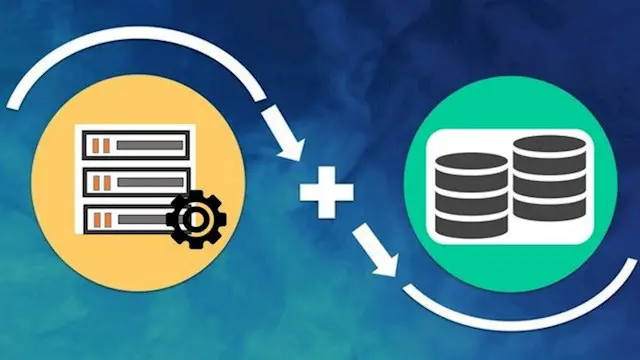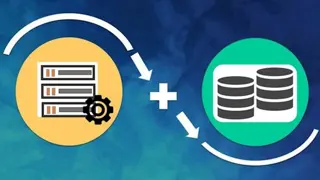
SAP ABAP (beginner to expert)
Self-paced videos, Lifetime access, Study material, Certification prep, Technical support, Course Completion Certificate
Uplatz
Summary
- Reed courses certificate of completion - Free
- Uplatz Certificate of Completion - Free
Add to basket or enquire
Overview
Uplatz offers comprehensive training on SAP ABAP module. This is video-based online course (self-paced training). You will be awarded Course Completion Certificate at the end of the course.
In this course, programming with the coding language ABAP is introduced and applied to the leading standard software in the field of Enterprise Resource Planning, SAP ERP.
As a first step, basic concepts of ABAP are explained, and methods of developing software for SAP ERP are introduced. Further contents of the course are ABAP’s powerful Type concept, the modularization of programs, working with databases and especially the different possibilities of designing and customizing interfaces.
The contents are presented by using examples which have to be programmed by the participants directly on the system. Conclusively, the gained knowledge is further strengthened by solving a complex case study in a less guided way of teaching. An outlook on ABAP objects rounds off the course.
Certificates
Reed courses certificate of completion
Digital certificate - Included
Will be downloadable when all lectures have been completed
Uplatz Certificate of Completion
Digital certificate - Included
Course Completion Certificate by Uplatz
Curriculum
Course media
Description
SAP ABAP - Course Curriculum
ABAP Dictionary Concepts
- Tables, Data Elements and Domains
- Transparent, Pooled and clustered tables
- Buffering, Indexes etc.,
- Structure, Table types and Type pools
- Views, Search helps and Lock objects
ABAP Programming Basics
- Data Types, Variables, Types, Operators, Expressions etc
- I/O Statements, Formatting commands
- Conditional statements, Loops and termination statements
- String and Date operations and System fields
- Fields Strings and Text Elements
- Internal Tables (All Operations)
- Types of Internal Tables (Standard, Sorted and Hashed)
- Joins, Nested selects Sub queries and For All Entries etc
- Open SQL statements and performance issues
- Messages (Creating and Calling etc.,)
- Modularization (Subroutines, Function Modules, Macros and Includes)
- Field Symbols
- Revision
- Debugging programs (Break Point, Watch points etc)
- Extended syntax check, Runtime Analysis, Performance Trace
Reports
- Classical Report Events
- Control Level Commands (AT First, AT New etc).,
- Selection Screen: Parameters
- Select –options and variants
- Selection screen designing (Blocks,Pushbuttons, Radio buttons etc)
- Interactive report events
- Menu painter: Designing and calling GUI Status
- Hide, Read Line, Get cursor, Modify line, Window etc., statements
- System fields of reports
- Logical database (Designing, Events)
- SAP Query (User groups, Info Sets and Queries)
- ALV reporting
Dialog Programs
- ABAP Memory and SAP Memory
- LUW and Update bundling technique
- Screens, flow logic events and Module pool
- Basic Screen elements (I/O field, Radio buttons and Check box etc.,)
- Maintaining screen sequences (Set screen, Call Screen and leave to screen)
- Field checks (Automatic, flow logic and module pool)
- Calling Programs (Submit, Call Transaction, Leave to list processing)
- Sub screens and modal Screens
- Table Controls, Steploops and Tabstrips
File Handling
- Local Files (Upload, Download etc)
- Sequential Files (Open dataset, Read Dataset, Transfer etc.)
- Files Formats
- Logical Files and Physical files
- Data Transfer Scenarios and methods
- BDC session method (Creating, Processing, Analyzing and Correction errors in Sessions)
- Recording Technique
- BI Session features, Status and OK codes
- Call Transaction method (Options, Tracing errors and Correction)
- Background Processing (Creating, Scheduling and Monitoring Jobs)
- LSMW (Methods, Steps and Conversions rules etc.)
SAP Scripts
- Form desigining (Pages, Windows, Page windows and Paragraphs etc.)
- SAP Script symbols
- Control commands
- Standard Text and Styles
- Inserting Logos (TIFF and Bitmap images)
- Modifications to Form and Print program
- Debugging, copying forms etc.
Smart Forms
- Smart form and Form Logic
- Calling a Form from print program
- Different types of nodes (Page, Table, Loop etc)
- Difference between SAP Script and Smart Forms
Enhancements
- Changing SAP Standard
- User Exits and Customer exits
- Implementing Function, Menu, Screen exits
- BADI
ALE
- Distributed Systems
- ALE Services and features
- ALE Inbound and Outbound process
- ALE Configuration (Logical systems, RFC Dest., Model view, Port, Partner Profiles etc)
- ALE Distribution Scenarios
- Transferring of Master Data (PUSH, PULL and Change Pointers)
- Filtering concepts (IDOC and Segment filtering, Message reduction)
IDOC
- Features and structure of IDOC
- Idoc type and Message type
- Segment definition and components
- Creating Segments
- Creating Idoc types (Basics Type nd Extension)
- Crating Message types and Process codes
- Developing Selection and Posting programs
- Idoc Enhancements
RFC
- Indroduction of RFC
- Communication mechanisms through RFC
- ABAP interfaces (RFC,tRFC, ARFC)
- Difference between tRFC and ARFC
BAPI
- SAP Business Objects
- Business Object Builder and BOR
- Features and applications of BAPI
- Creating Business Object types
- Developing BAPIs
- Working with a standard BAPI
PROJECT IMG CREATIONS
Who is this course for?
Everyone
Requirements
Passion and determination to achieve your goals!
Career path
- SAP ABAP Consultant
- SAP ABAP Programmer
- SAP ABAP Developer
- SAP ABAP HANA Consultant
- Software Programmer
- SAP ABAP - Associate
- Technical Lead
- Business Analyst/Consultant
- Business Analyst
- SAP Project Manager
- SAP ABAP WorkFlow Consultant
- SAP ABAP Development Application Developer
- Solution Architect
- Data Architect
- SAP Full Stack Developer
- SAP BW/HANA/Basis Consultant
- ETL Designer
- Data Modeler
Questions and answers
Is your own access to SAP required for any of the learning or is all completed using course material?
Answer:Hi Emma SAP modules are very much practice-based. Unless you practice, there is not much point doing the course. You have 2 options: 1) Go for tutor-led online training. Here we provide SAP server access free for 3 months to allow you to practice. The course name is " SAP ABAP online tutor-led training course". 2) Study through self-paced videos. This is the course you've mentioned (SAP ABAP Training). You can buy system access at additional cost of £20 per month. Let us know if interested.
This was helpful.
Reviews
Currently there are no reviews for this course. Be the first to leave a review.
Legal information
This course is advertised on reed.co.uk by the Course Provider, whose terms and conditions apply. Purchases are made directly from the Course Provider, and as such, content and materials are supplied by the Course Provider directly. Reed is acting as agent and not reseller in relation to this course. Reed's only responsibility is to facilitate your payment for the course. It is your responsibility to review and agree to the Course Provider's terms and conditions and satisfy yourself as to the suitability of the course you intend to purchase. Reed will not have any responsibility for the content of the course and/or associated materials.


